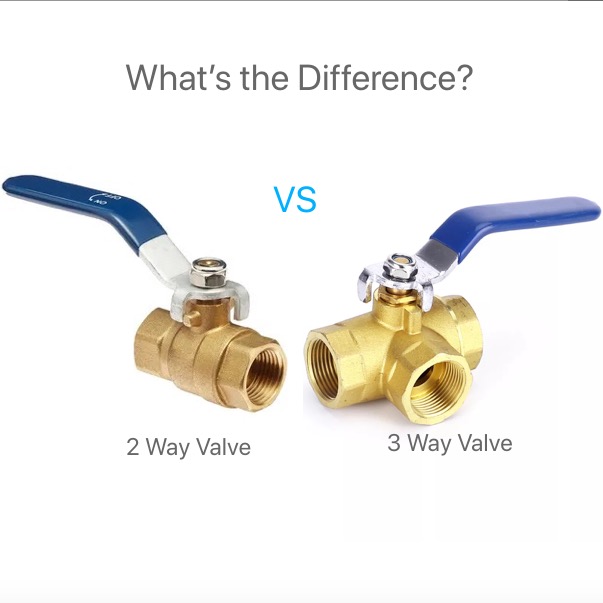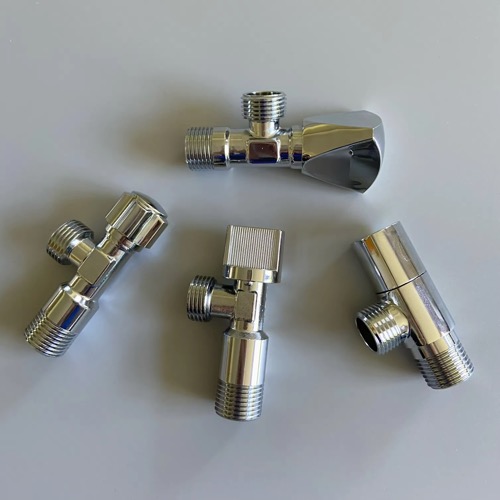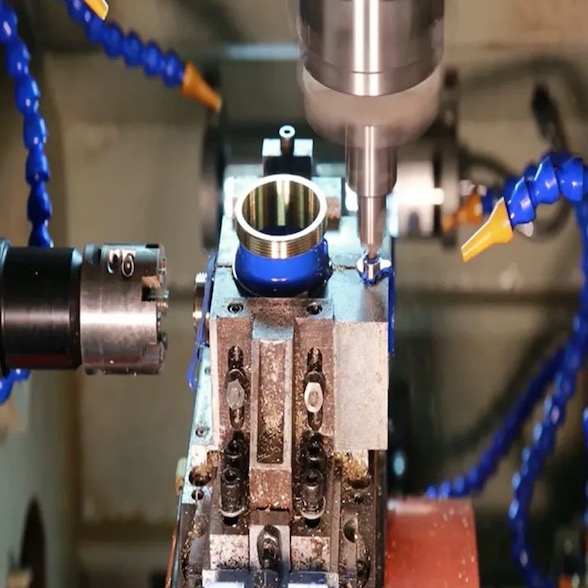A common challenge in fluid control systems is choosing between a 2-way and a 3-way valve. Using the wrong one can lead to inefficiencies, system failures, and increased costs.
The main difference between a 2-way and a 3-way valve is their function in fluid control. A 2-way valve controls flow in one direction, while a 3-way valve can switch flow between two different paths.
Understanding these differences is crucial for selecting the right valve for your application. Let's explore each type in detail.
What is 2 Way Valve?
A 2-way valve is a simple control device used to start or stop fluid flow in a single direction. It has one inlet and one outlet.
A 2-way valve is used to control the on/off flow of liquids or gases in a pipeline. It is commonly found in plumbing, heating, and industrial systems.
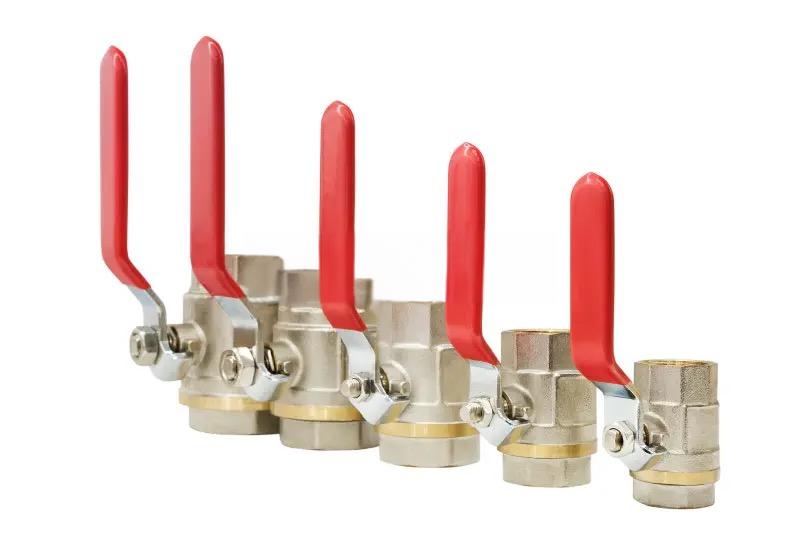
2 way Brass Valve
How Does a 2 Way Valve Work?
A 2-way valve operates like a basic switch. It either allows flow or stops it. The valve can be manual, electric, or pneumatic, depending on the system requirements.
Key Features of 2-Way Valves:
- One inlet and one outlet
- Controls flow by opening or closing
- Can be used for shutoff and regulation
- Available in different materials like brass, stainless steel, and plastic
Applications of 2 Way Valves
| Application | Function |
|---|---|
| Plumbing Systems | Controls water flow |
| Heating Systems | Regulates heat transfer |
| Gas Lines | Manages gas distribution |
| Industrial Use | Directs liquid movement |
2-way valves are ideal for systems that require simple on/off control. They are commonly used in water pipes, HVAC systems, and irrigation setups.
What is 3 Way Valve?
A 3-way valve has three ports and is used to mix, divert, or bypass flow between two different outlets.
A 3-way valve is designed to regulate or redirect flow in multiple directions, making it useful in mixing, bypassing, or diverting applications.
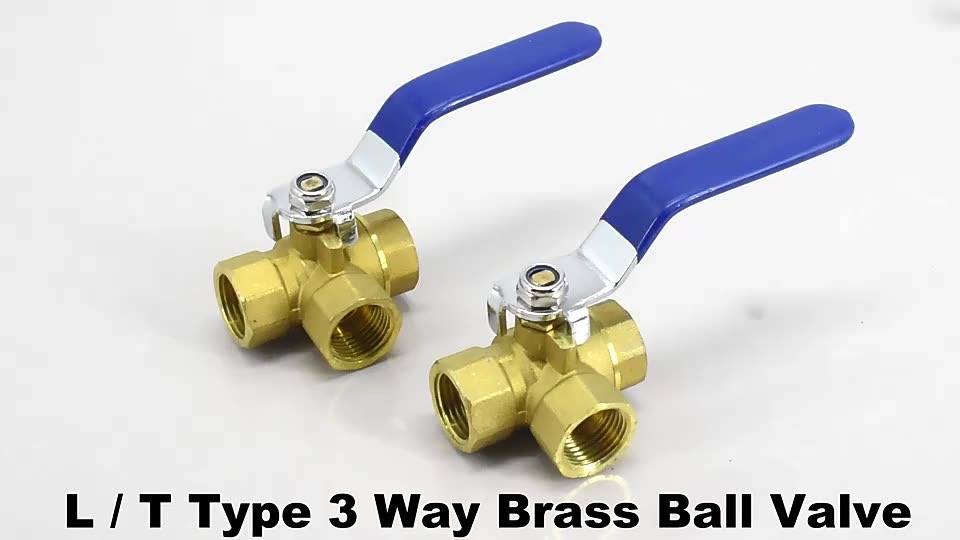
L/T Type 3 way Brass Ball Valve
How Does a 3 Way Valve Work?
A 3-way valve works by opening and closing different pathways to control where the fluid goes. It can be configured as a mixing valve or a diverting valve.
Types of 3-Way Valves:
- Mixing Valve: Combines two fluid streams into one output
- Diverting Valve: Redirects fluid from one input to two possible outputs
Applications of 3 Way Valves
| Application | Function |
|---|---|
| HVAC Systems | Controls temperature by mixing hot and cold water |
| Gas Distribution | Diverts gas to different lines |
| Industrial Processes | Adjusts flow direction in manufacturing |
| Irrigation Systems | Directs water to different zones |
3-way valves are versatile and can be found in both residential and industrial settings. Their ability to mix and divert makes them crucial for process control systems.
What is the purpose of a 3-way valve?
Many systems require the ability to mix or divert flow efficiently, which is where a 3-way valve comes in.
The purpose of a 3-way valve is to control fluid direction, either by mixing two inputs into one output or diverting one input to two different outputs.
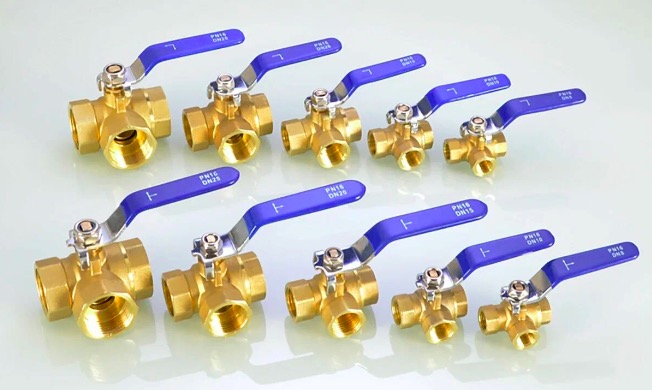
Why Use a 3-Way Valve?
- It eliminates the need for multiple valves in a system
- Reduces pressure drops1 and improves efficiency
- Provides better control over temperature and flow rates2
In applications like HVAC, a 3-way valve mixes hot and cold water to maintain a desired temperature, ensuring comfort and efficiency.
How do you use a 3-way valve?
Using a 3-way valve properly ensures optimal performance and longevity of your system.
To use a 3-way valve, identify the inlet and outlet ports, connect the appropriate fluid lines, and adjust the valve to mix or divert flow as needed.

Using 3 Way Valve
Steps to Use a 3-Way Valve:
- Identify the function: Determine if you need mixing or diverting
- Connect the ports: Attach the inlet and outlet connections correctly
- Adjust the settings: Set manual or automated control mechanisms
- Test the flow: Ensure the valve operates as intended
Different configurations are available, including manual handles, electric actuators, and pneumatic controls, depending on the application.
What is the difference between a 2 way and 3-way control valve?
Choosing between a 2-way and a 3-way valve depends on the specific needs of your system.
A 2-way valve controls flow in one direction, while a 3-way valve allows for mixing or diverting flow between two different paths.
| Feature | 2-Way Valve | 3-Way Valve |
|---|---|---|
| Number of Ports | 2 | 3 |
| Function | On/Off control | Mixing or diverting |
| Common Use | Shutoff, basic flow control | Temperature and directional control |
| Complexity | Simple | More advanced |
| Cost | Lower | Higher |
When to Use Each Valve Type
- Use a 2-way valve if you only need to start or stop flow
- Use a 3-way valve if you need to mix, divert, or bypass flow
Understanding these differences helps in selecting the right valve, ensuring efficiency and cost-effectiveness.
Conclusion
A 2-way valve is best for simple on/off control, while a 3-way valve provides flexibility for mixing and diverting flow. Choosing the right valve depends on your system’s needs. For more information, welcome to CONTACT VPEXCO



